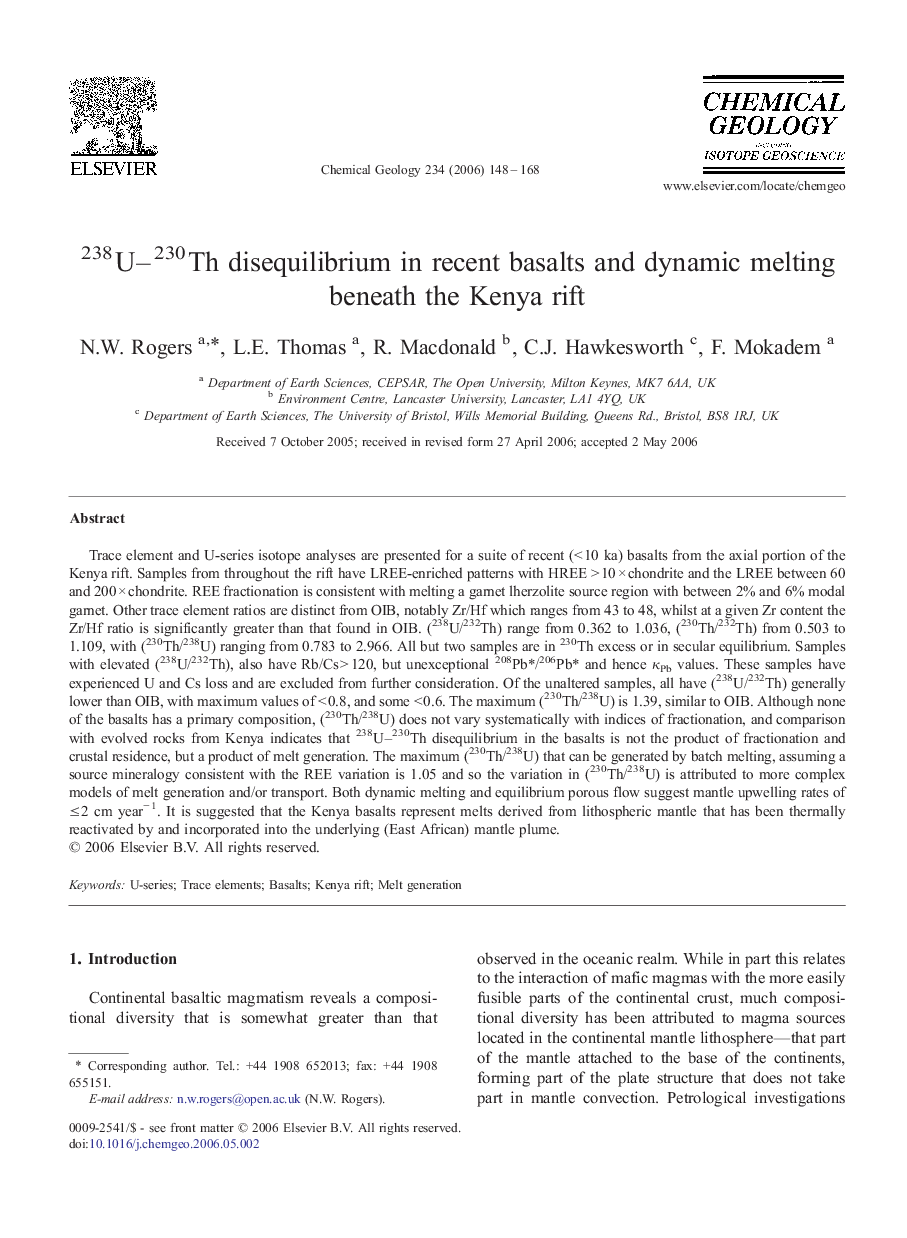| کد مقاله | کد نشریه | سال انتشار | مقاله انگلیسی | نسخه تمام متن |
|---|---|---|---|---|
| 4701018 | 1637762 | 2006 | 21 صفحه PDF | دانلود رایگان |

Trace element and U-series isotope analyses are presented for a suite of recent (< 10 ka) basalts from the axial portion of the Kenya rift. Samples from throughout the rift have LREE-enriched patterns with HREE > 10 × chondrite and the LREE between 60 and 200 × chondrite. REE fractionation is consistent with melting a garnet lherzolite source region with between 2% and 6% modal garnet. Other trace element ratios are distinct from OIB, notably Zr/Hf which ranges from 43 to 48, whilst at a given Zr content the Zr/Hf ratio is significantly greater than that found in OIB. (238U/232Th) range from 0.362 to 1.036, (230Th/232Th) from 0.503 to 1.109, with (230Th/238U) ranging from 0.783 to 2.966. All but two samples are in 230Th excess or in secular equilibrium. Samples with elevated (238U/232Th), also have Rb/Cs > 120, but unexceptional 208Pb⁎/206Pb⁎ and hence κPb values. These samples have experienced U and Cs loss and are excluded from further consideration. Of the unaltered samples, all have (238U/232Th) generally lower than OIB, with maximum values of < 0.8, and some < 0.6. The maximum (230Th/238U) is 1.39, similar to OIB. Although none of the basalts has a primary composition, (230Th/238U) does not vary systematically with indices of fractionation, and comparison with evolved rocks from Kenya indicates that 238U–230Th disequilibrium in the basalts is not the product of fractionation and crustal residence, but a product of melt generation. The maximum (230Th/238U) that can be generated by batch melting, assuming a source mineralogy consistent with the REE variation is 1.05 and so the variation in (230Th/238U) is attributed to more complex models of melt generation and/or transport. Both dynamic melting and equilibrium porous flow suggest mantle upwelling rates of ≤ 2 cm year− 1. It is suggested that the Kenya basalts represent melts derived from lithospheric mantle that has been thermally reactivated by and incorporated into the underlying (East African) mantle plume.
Journal: Chemical Geology - Volume 234, Issues 1–2, 30 October 2006, Pages 148–168